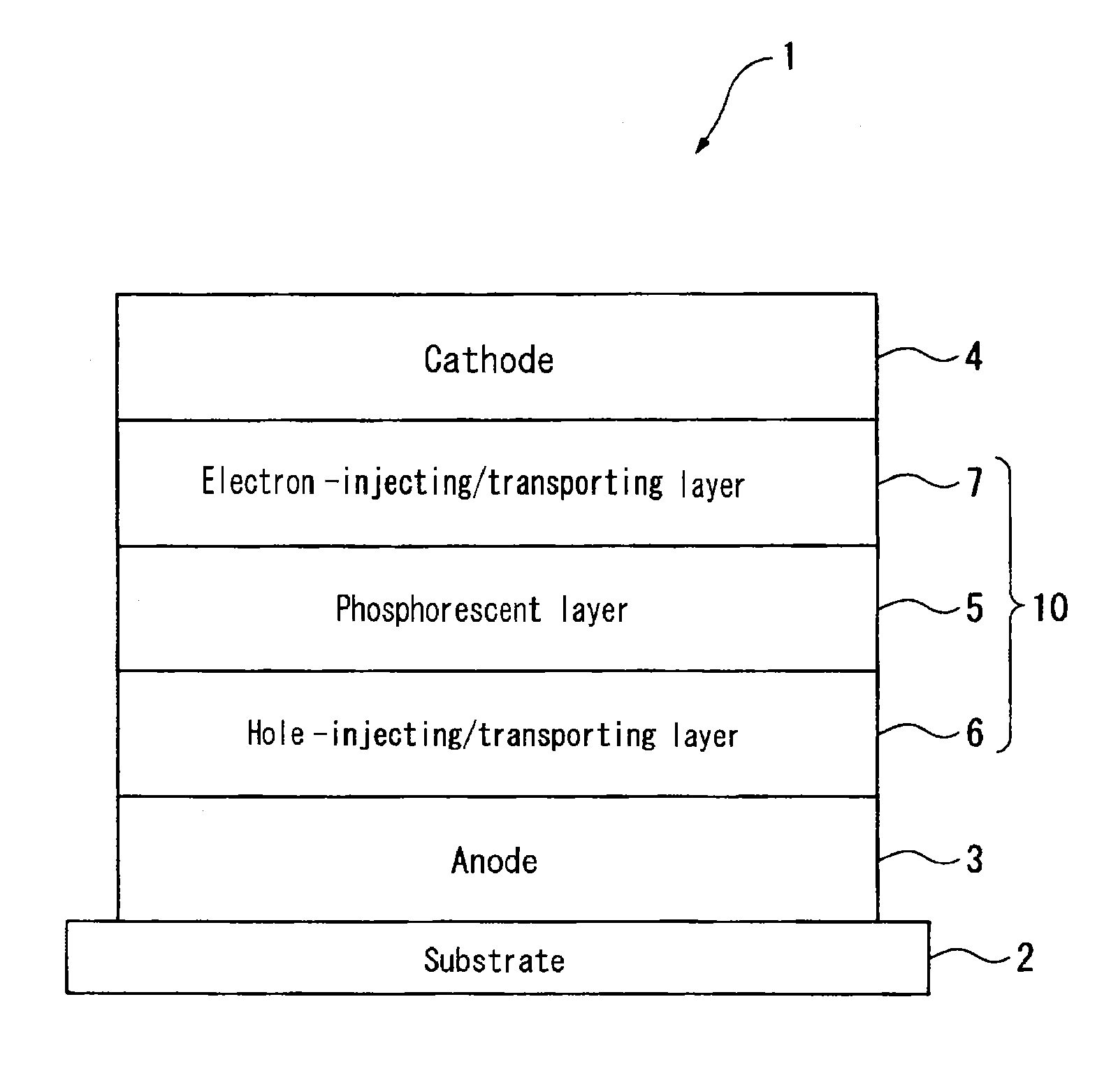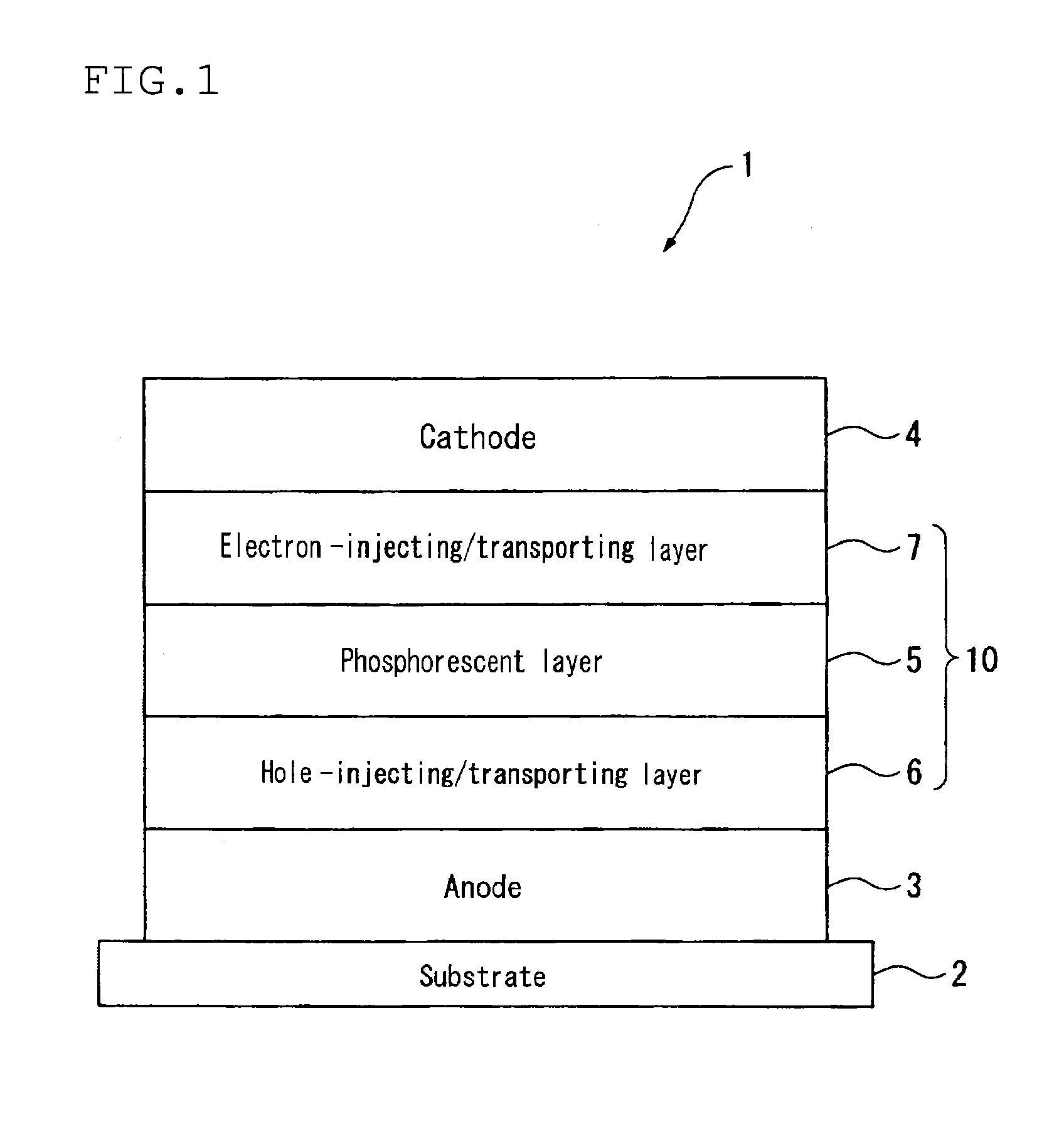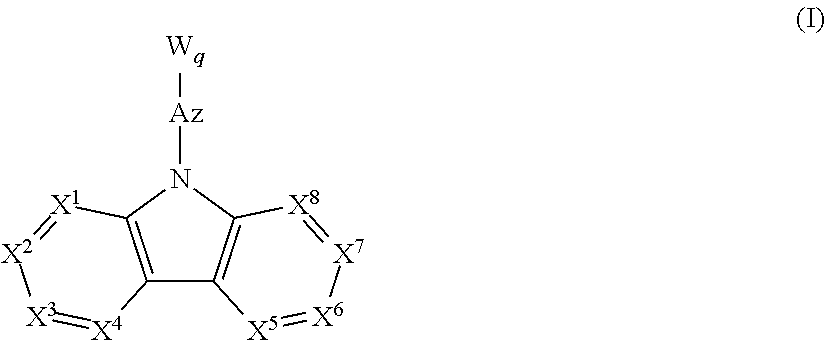Material for organic electroluminescence device, and organic electroluminescence device using the same
- Summary
- Abstract
- Description
- Claims
- Application Information
AI Technical Summary
Benefits of technology
Problems solved by technology
Method used
Image
Examples
synthesis example 1
Synthesis of Compound H1
[0254]
[0255]Under an argon stream, Intermediate 2 (2.3 g, 7.2 mmol), Intermediate 5 (3.2 g, 8.6 mmol), tris(dibenzilidene acetone)dipalladium (Pd2(dba)3; 0.26 g, 0.29 mmol), tri-t-butylphosphonium tetrafluoro borate (P(tBu)3.HBF4; 0.21 g, 0.72 mmol), sodium t-butoxide (NaOtBu; 1.4 g, 14 mmol) and anhydrous xylene (40 mL) were sequentially charged and the mixture was heated under reflux for 8 hours.
[0256]After the reaction solution was heated to room temperature, the organic phase was separated, and the organic solvent was distilled away under reduced pressure. The residue obtained was purified by means of silica gel column chromatography to obtain 3.6 g of yellowish white solids (Compound H1).
[0257]The result of FD-MS for the compound obtained is shown below.
FDMS, calcd for C47H30N4=650, found m / z=650 (M+)
synthesis example 2
Synthesis of Compound H2
[0258]
[0259]Compound H2 was synthesized in the same manner as in the synthesis of Compound H1 in Synthesis Example 1 (6), except that Intermediate 4 was used instead of Intermediate 5.
[0260]The result of FD-MS for the compound obtained is shown below.
FDMS, calcd for C41H26N4=574, found m / z=574 (M+) [0169]
Preparation of Organic EL Device and Evaluation of Emitting Performance
example 1
(Fabrication of Organic EL Device)
[0261]A glass substrate, measuring 25 mm×75 mm×1.1 mm thick, with an ITO transparent electrode (manufactured by Geomatics Co.) was subjected to ultrasonic cleaning in isopropyl alcohol for 5 minutes and then UV ozone cleaning for 30 minutes.
[0262]The cleaned glass substrate with transparent electrode lines was mounted on a substrate holder in a vacuum deposition device. First, a 5 nm thick film of the following acceptor compound C-1 was formed by deposition on the surface where the transparent electrode lines were formed, so as to cover the transparent electrode. On the film of compound C-1, as a first hole-transporting material, the following aromatic amine derivative (compound X1) was deposited to form a first hole-transporting layer having a thickness of 65 nm. Subsequent to the formation of the first hole-transporting layer, as a second hole-transporting material, the following aromatic amine derivative (compound X2) was deposited to form a seco...
PUM
 Login to View More
Login to View More Abstract
Description
Claims
Application Information
 Login to View More
Login to View More - R&D
- Intellectual Property
- Life Sciences
- Materials
- Tech Scout
- Unparalleled Data Quality
- Higher Quality Content
- 60% Fewer Hallucinations
Browse by: Latest US Patents, China's latest patents, Technical Efficacy Thesaurus, Application Domain, Technology Topic, Popular Technical Reports.
© 2025 PatSnap. All rights reserved.Legal|Privacy policy|Modern Slavery Act Transparency Statement|Sitemap|About US| Contact US: help@patsnap.com



